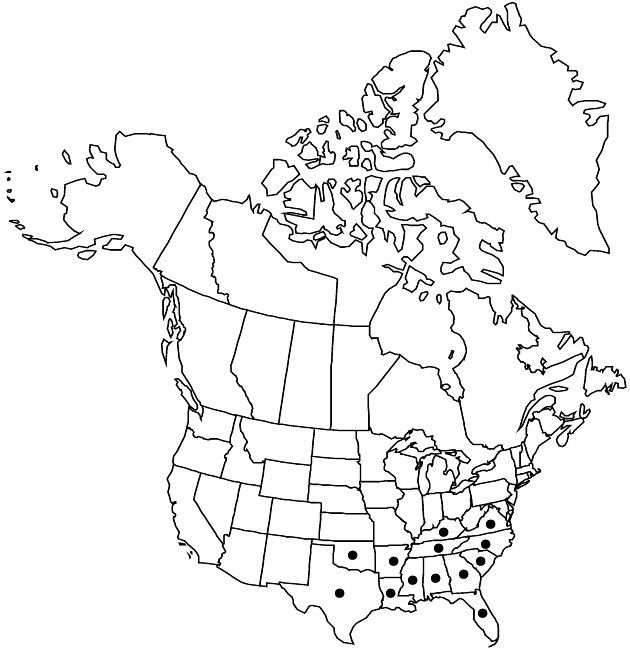Eupatorium compositifolium
Fl. Carol., 199. 1788.
Perennials, 50–200 cm. Stems (from short caudices) single, branched distally, puberulent throughout (lateral buds often develop fertile and infertile branches). Leaves opposite (proximal) or alternate (lateral buds dormant or producing 1 pair of leaves); sessile; blades (often pinnately or ternately lobed) or lobes pinnately nerved, linear, 20–80 × 0.5–2.5(–4) mm, bases cuneate, margins entire, apices acuminate, faces puberulent, gland-dotted. Heads in paniculiform arrays. Phyllaries 7–10 in 2–3 series, (sometimes purple) elliptic to oblong, 1–3 × 0.5–0.8 mm, (margins hyaline) apices acuminate and mucronate, abaxial faces puberulent (mostly on midveins), usually gland-dotted. Florets 5; corollas (sometimes with purple throats) 2.5–3 mm. Cypselae 1–1.7 mm; pappi of 20–30 bristles 3–3.5 mm. 2n = 20.
Phenology: Flowering Aug–Oct.
Habitat: Open or slightly shaded, wet sites, sand dunes, disturbed areas, roadsides, flatwoods
Elevation: 10–200+ m
Distribution

Ala., Ark., Fla., Ga., Ky., La., Miss., N.C., Okla., S.C., Tenn., Tex., Va.
Discussion
Selected References
None.